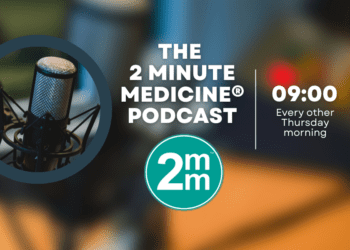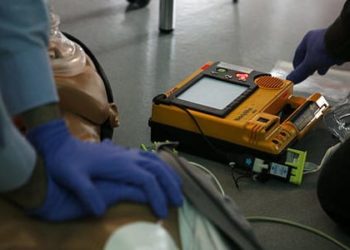Bystander CPR positively associated with cardiac arrest survival
Image: PD
1. Rates of bystander cardiopulmonary resuscitation (CPR) on patients in cardiac arrest increased following initiatives to improve resuscitation education in Denmark.
2. Survival increased in cardiac arrest patients who were given CPR by bystanders.
Evidence Rating Level: 2 (Good)
Study Rundown: This study, conducted using patient data from Denmark, assessed the relationship between increased bystander resuscitation efforts and patient survival following out-of-hospital cardiac arrest between 2001 and 2010. The rates of bystander intervention were particularly significant as Denmark started several initiatives in 2005 to increase rates of bystander CPR, including mandatory CPR training in elementary schools and upon receiving driving licensure. It was found that bystander intervention rates, survival upon arrival, 30-days, and 1-year increased significantly over the study period. Thirty-day and 1-year survival tripled and the number of survivors per 100,000 people more than doubled between 2001 and 2010. Improvements in standards of care, quality of CPR, and emergency medical service (EMS) techniques among other factors, which have the potential to alter survival rates, were not accounted for. Thus, while a strong association was observed between increased bystander CPR and survival, a casual relationship could not be readily established.
Click to read the study published today in JAMA
Relevant Reading: Predictors of survival from out-of-hospital cardiac arrest: a systematic review and meta-analysis
In-Depth [retrospective study]: This retrospective study collected data from the Danish Cardiac Arrest Register and analyzed the relationship of bystander resuscitation and survival upon arrival to the hospital at 30 days and one year. A total of 19,468 out of hospital cardiac arrest patients were included in the study after excluding patients with non-cardiac causes of arrest and arrest witnessed by EMS personnel. Rates of bystander CPR increased from 21.1% to 44.9% (p<.001), but the rate of bystander defibrillator use only increased from 1.2% to 2.2% (p<.003). There was a concomitant increase in survival on hospital arrival from 7.9% to 21.8% (p<.001), 30-day survival from 4.5% to 10.8% (p<.001), and 1-year survival from 2.9% to 10.2% (p<.001). There was also an increase in the survival of patients whose cardiac arrest was not initially witnessed by a bystander but were still given CPR before EMS arrived.
By Ravi Shah and Brittany Hasty
More from this author: Terminal cancer patients hold misconceptions of the role of chemotherapy,Home-based walking program an effective treatment for peripheral artery disease, Androgen deprivation therapy increases risk of acute kidney injury in patients with prostate cancer, “Polypill” improves outcomes in cardiovascular disease
© 2013 2minutemedicine.com. All rights reserved. No works may be reproduced without written consent from 2minutemedicine.com. Disclaimer: We present factual information directly from peer reviewed medical journals. No post should be construed as medical advice and is not intended as such by the authors or by 2minutemedicine.com. PLEASE SEE A HEALTHCARE PROVIDER IN YOUR AREA IF YOU SEEK MEDICAL ADVICE OF ANY SORT. Content is produced in accordance with fair use copyrights solely and strictly for the purpose of teaching, news and criticism. No benefit, monetary or otherwise, is realized by any participants or the owner of this domain.





